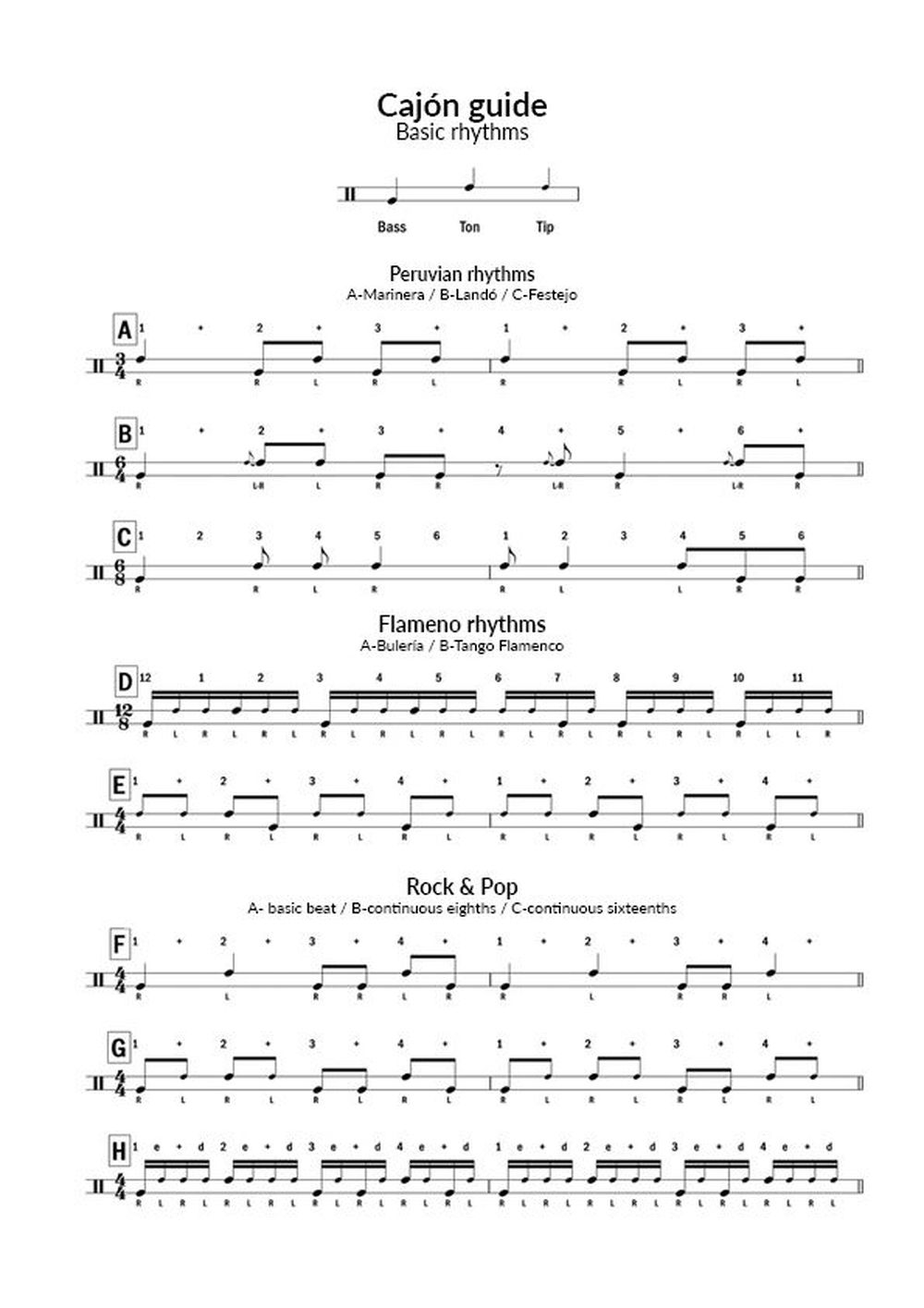8. Traditional and modern grooves
The sheet music will show you some examples of traditional and modern cajón rhythms. The three beats from the previous chapter are sufficient to play them.

Our trip begins with three rhythms from Peru. They will, of course, sound especially good and authentic on an Afro-Peruvian cajón without any snare mechanism, but they work perfectly well on a Flamenco cajón, as well.
Marinera, Landó und Festejo are Peruvian dance and music styles in 3/4, 6/4 and 6/8 time, respectively. Pay attention to the hand notation and count the time while playing to start with, until you have become accustomed to the rhythms.
In the Landó, you'll see a brief beat before the 2, 4+ and 6 time each - this is the so-called flam. Play this adornment sound only once you feel secure in playing the main rhythm.
This is followed by two rhythms from Flamenco music: Bulería and Tango Flamenco.
A special feature of the Bulerías is that you start counting at 12. To properly understand the rhythm, I recommend the following exercise before you start to play: count aloud, clapping on every number but stressing the numbers in bold.
12 - 1 - 2 - 3 - 4 - 5 - 6 - 7 - 8 - 9 - 10 - 11
Once you have mastered this rhythm, the Flamenco almost plays itself!
Finally, you'll find three ways of transposing simple rock and pop grooves from the drums to the cajón. To begin with, only play the bass drum parts with the right hand and the snare drum parts with the left.
In the next example, the same groove is given additional high slap tones, so that all eighth notes are now played in time. The last line shows how the groove is played with continual sixteenth notes.
Your Contacts
Product Highlights
Offers
-
Cajons
Recommended categories
Do you like what you're seeing?






